Roller Coaster Safety: What You Need to Know?
Roller coasters are the epitome of thrill-seeking adventures, offering heart-pounding excitement and unforgettable experiences. However, with great thrills come great responsibilities—especially when it comes to safety. Understanding roller coaster safety is essential not just for the amusement parks but also for riders. This article explores essential aspects of roller coaster safety, including regulations, common risks, and tips for ensuring a safe and enjoyable experience while riding these thrilling attractions. So, buckle up as we dive into the world of roller coaster safety!
The design of roller coasters plays a crucial role in their safety. Engineers and designers use advanced physics and engineering principles to create rides that are not only thrilling but also safe. The structural integrity of a roller coaster is paramount; it must be able to withstand the forces exerted on it during operation. For instance, the materials used—like steel and reinforced composites—are chosen for their strength and durability. Additionally, the design must consider various factors such as weight distribution, speed, and the forces experienced by riders, ensuring that each twist and turn is both exhilarating and secure.
Various organizations set safety regulations for amusement parks and roller coasters to protect riders. These regulations are designed to ensure that rides are constructed and operated under strict guidelines. In the United States, the American Society for Testing and Materials (ASTM) plays a significant role in establishing safety standards. These standards cover everything from the materials used in construction to the maintenance protocols that parks must follow. Compliance with these regulations is not just a legal obligation; it's a commitment to rider safety and enjoyment.
Regular inspections are vital for maintaining roller coaster safety. These inspections are performed by trained professionals to identify any potential issues before they pose a risk to riders. Inspections can be categorized into daily checks and more comprehensive annual evaluations. The frequency and types of inspections vary based on the ride's complexity and the manufacturer's recommendations. It's critical that these inspections are thorough, as they help ensure that every component of the ride is functioning correctly and safely.
Daily checks are essential before opening rides. Each day, park staff conduct a series of checks to guarantee rider safety. These checks typically include:
- Inspecting safety restraints for proper functionality
- Examining the track for any visible wear or damage
- Testing emergency stop systems
- Verifying that all mechanical components are in working order
By performing these daily checks, parks can identify and address any potential issues before guests take their seats, ensuring a safer experience for everyone.
Annual evaluations provide a comprehensive review of roller coaster safety. These evaluations are conducted by external safety consultants and include detailed inspections of all ride components. The process often involves:
- Structural assessments to ensure integrity
- Reviewing maintenance records
- Testing all safety systems under simulated conditions
- Updating safety protocols as needed
These evaluations are crucial for the long-term safety of rides, as they help identify areas for improvement and ensure compliance with evolving safety standards.
Despite safety measures, incidents can occur. Understanding common risks associated with roller coasters can help mitigate these dangers. Some of the most frequently reported incidents include:
- Injuries from improper use of safety restraints
- Accidents due to sudden stops or mechanical failures
- Health issues triggered by extreme speeds or heights
By being aware of these risks, both amusement parks and riders can take proactive steps to enhance safety and reduce the likelihood of incidents.
Riders can take steps to enhance their safety while enjoying roller coasters. Here are some practical tips for ensuring a safer and more enjoyable ride experience:
Understanding age and health restrictions is crucial for safe riding. Each roller coaster has specific guidelines regarding height and health conditions that must be adhered to. For example, individuals with heart conditions, back problems, or those who are pregnant should consult with a physician before riding. It's essential to respect these guidelines to ensure not only your safety but also the safety of others on the ride.
Correctly using safety restraints is vital for rider protection. Before the ride begins, ensure that your safety harness or lap bar is securely fastened. During the ride, keep your arms and legs inside the vehicle at all times. These simple actions can significantly reduce the risk of injury and enhance your overall experience.
Q: Are roller coasters safe?
A: Yes, roller coasters are generally safe when built and maintained according to strict safety standards. Regular inspections and adherence to safety regulations play a significant role in ensuring rider safety.
Q: What should I do if I have health concerns?
A: If you have health concerns, it's best to consult with a physician before riding. Always follow the park's guidelines regarding health restrictions.
Q: How often are roller coasters inspected?
A: Roller coasters undergo daily safety checks and more comprehensive annual evaluations to ensure they remain safe for public use.
Q: Can I ride if I'm pregnant?
A: Most amusement parks advise against riding roller coasters while pregnant due to the physical stresses involved. Always check the park's guidelines for specific advice.

Understanding Roller Coaster Design
When you think about roller coasters, the first thing that often comes to mind is the thrill of soaring through the air, twisting and turning at breakneck speeds. But have you ever stopped to consider the intricate engineering that keeps you safe while you’re screaming your lungs out? The design of a roller coaster is not just about creating an exhilarating ride; it’s about ensuring that every twist and turn adheres to strict safety standards. Engineers utilize advanced physics and materials science to create structures that can withstand the forces exerted on them, ensuring both stability and safety for riders.
At the core of roller coaster design lies a deep understanding of forces and mechanics. For instance, the concepts of centrifugal force and gravity play vital roles in how a coaster operates. When the train climbs a hill, it’s the gravitational pull that keeps it grounded, while the thrill of the drop is enhanced by the acceleration due to gravity. Engineers must calculate these forces meticulously to ensure that the coaster can handle the stresses of high-speed turns and sudden drops. This involves using computer simulations and physical models to predict how the coaster will perform under various conditions.
Moreover, the materials used in construction are equally important. Modern roller coasters are often made from steel, which offers a combination of strength and flexibility, allowing for more complex designs. Wooden coasters, on the other hand, provide a classic feel and can deliver a different kind of ride experience. Each material has its own set of advantages and disadvantages, and the choice between them can significantly impact the overall safety and enjoyment of the ride.
In addition to the structural elements, the design layout of a roller coaster is crucial. Designers must consider the flow of the ride, ensuring that it provides a thrilling experience without compromising safety. This includes planning the sequence of elements such as drops, loops, and turns. Each of these elements must be designed to work in harmony with the others, creating a seamless experience for riders. For example, a well-designed loop should allow riders to feel a sense of weightlessness, while also ensuring that they remain securely in their seats.
Another essential aspect of roller coaster design is safety features. Modern coasters are equipped with various mechanisms to enhance rider safety, including:
- Restraint Systems: These are designed to keep riders securely in place during the ride.
- Emergency Brakes: These systems can stop the coaster in case of an unforeseen event.
- Safety Sensors: These monitor the coaster’s performance and can halt operations if something goes wrong.
In conclusion, understanding roller coaster design is essential for appreciating the thrill of these rides. Engineers work tirelessly to balance excitement with safety, ensuring that every ride is not only fun but also secure. So, the next time you buckle in for a wild ride, take a moment to think about the incredible technology and design that makes your adventure possible!
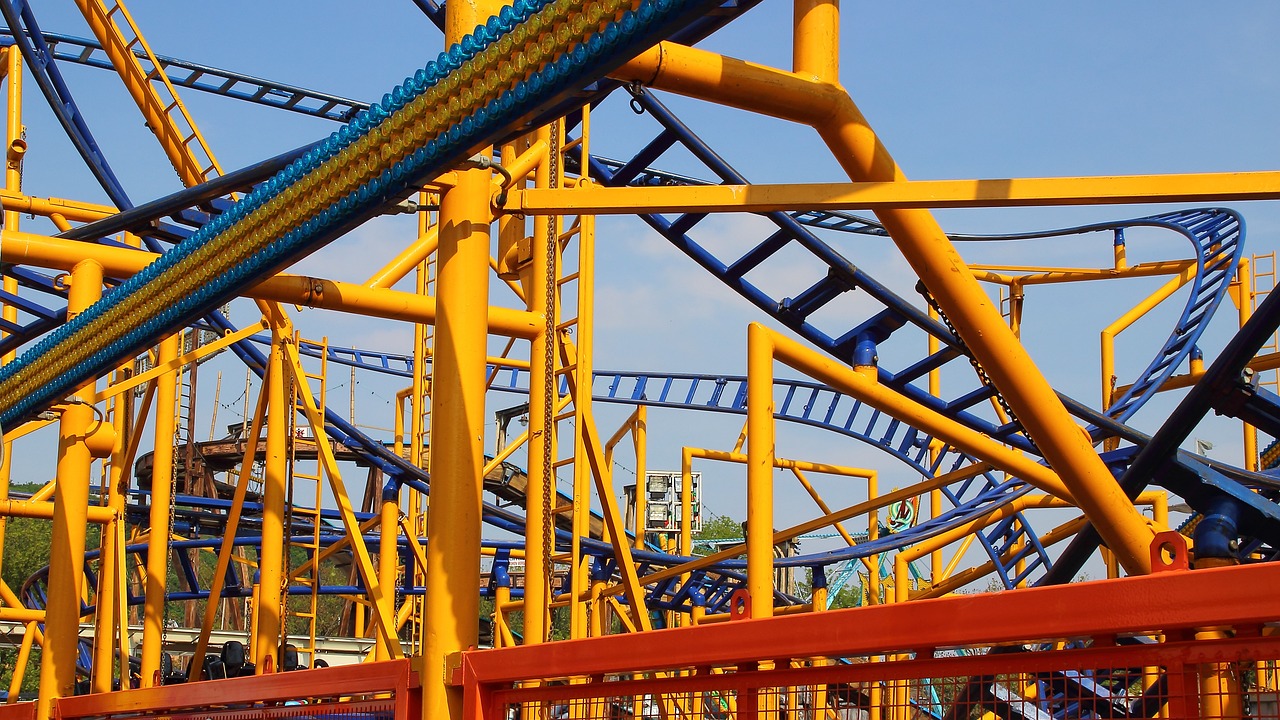
Safety Regulations and Standards
When it comes to roller coasters, safety is not just a suggestion; it’s a mandatory requirement. Various organizations, both governmental and independent, have established a comprehensive set of safety regulations and standards that amusement parks must adhere to. These regulations are designed to ensure that every ride is not only thrilling but also safe for the thousands of riders who flock to parks each year. The foundation of these standards is built on rigorous engineering principles, which are crucial for the design and operation of roller coasters. But what exactly do these regulations entail?
In the United States, the American Society for Testing and Materials (ASTM) plays a pivotal role in setting the safety standards for amusement rides. Their guidelines cover everything from the materials used in construction to the operational protocols that must be followed. For example, the ASTM F24 committee focuses specifically on the safety of amusement rides and devices, ensuring that all rides meet strict criteria before they can be opened to the public.
Additionally, state and local governments often have their own regulations that can vary significantly. Some regions may require more frequent inspections or specific safety features that exceed national standards. This patchwork of regulations can sometimes be confusing, but it ultimately serves the purpose of protecting riders. It’s like having multiple layers of safety nets, each designed to catch any potential issues before they escalate into serious problems.
One of the most critical aspects of these safety standards is the inspection protocols that must be followed. Regular inspections are not just a box to check; they are a vital part of maintaining a safe environment for riders. Inspections typically occur at various intervals, including daily checks before the park opens and comprehensive annual evaluations that assess the overall condition of the ride.
| Inspection Type | Frequency | Description |
|---|---|---|
| Daily Safety Checks | Every Day | Visual and mechanical inspections of all ride components. |
| Annual Safety Evaluations | Once a Year | Thorough examination of the ride’s structural integrity and safety systems. |
Daily safety checks are crucial as they ensure that any minor issues are caught before riders experience the thrill of the ride. These checks typically include examining the tracks, testing the safety restraints, and ensuring that all electronic systems are functioning properly. On the other hand, annual evaluations are more comprehensive and often involve third-party inspectors who assess everything from the ride’s structural integrity to compliance with all safety regulations.
Despite the strict regulations and thorough inspections, it’s important to remember that no system is foolproof. Incidents can still occur, which is why ongoing training for staff and emergency preparedness plans are also critical components of roller coaster safety. Staff members must be well-versed in safety protocols and emergency procedures to ensure quick and effective responses in case of any incidents.
In conclusion, the safety regulations and standards governing roller coasters are designed to create a thrilling yet secure environment for all riders. By adhering to these regulations, amusement parks not only comply with legal requirements but also prioritize the well-being of their guests. So, the next time you buckle up for that heart-pounding drop, you can rest assured that behind the scenes, a lot of effort has gone into keeping you safe.
- What are the main organizations that regulate roller coaster safety? The American Society for Testing and Materials (ASTM) is a key organization, along with various state and local regulatory bodies.
- How often are roller coasters inspected? Roller coasters undergo daily safety checks and comprehensive annual evaluations.
- What do daily safety checks involve? Daily checks include inspecting tracks, testing safety restraints, and ensuring that all electronic systems are operational.
- Can incidents still occur despite regulations? Yes, while regulations and inspections significantly reduce risks, no system is entirely foolproof.
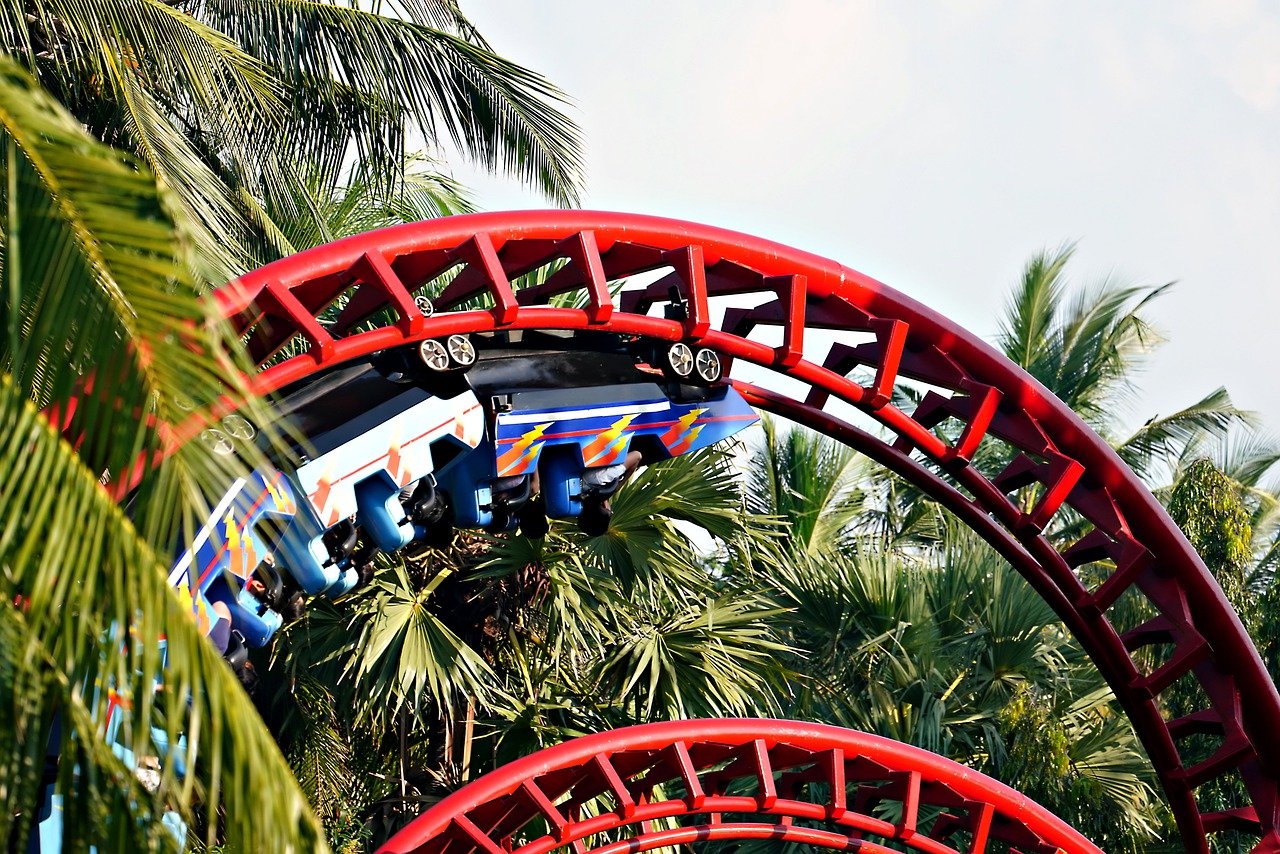
Inspection Protocols
When it comes to roller coaster safety, are the backbone of ensuring that these thrilling rides remain safe for all riders. Regular inspections are not just a formality; they are a critical part of the maintenance routine that keeps these mechanical marvels operating smoothly. The frequency and types of inspections can vary, but they all share a common goal: to identify potential issues before they become safety hazards. Imagine a roller coaster as a finely tuned orchestra; if one instrument is out of sync, the whole performance can be thrown off. Similarly, if any component of a roller coaster is not functioning correctly, it could lead to serious consequences.
Inspections typically fall into several categories, each with its own specific focus. For instance, daily safety checks are conducted every morning before the park opens, ensuring that everything is in perfect order for the day’s riders. These checks cover essential components such as:
- Track integrity
- Train alignment
- Restraint systems
- Emergency stop systems
By meticulously examining these elements, operators can catch minor issues before they escalate. Additionally, there are annual safety evaluations that provide a more comprehensive review of the entire roller coaster system. These evaluations are akin to a yearly health check-up; they look at everything from structural integrity to mechanical performance, ensuring that the ride meets all safety standards.
During these annual evaluations, inspectors will often use sophisticated technology to assess the condition of the ride. This can include:
| Inspection Type | Frequency | Purpose |
|---|---|---|
| Daily Safety Checks | Every day | Ensure immediate safety before opening |
| Monthly Inspections | Monthly | Check mechanical components and systems |
| Annual Safety Evaluations | Yearly | Comprehensive safety and performance check |
This thorough approach to inspections not only helps in identifying potential safety issues but also builds a culture of safety within amusement parks. When park operators prioritize inspections, they send a clear message to riders: your safety is our top priority. So, the next time you buckle up for a wild ride, remember that a dedicated team of professionals is working tirelessly behind the scenes to ensure that your experience is both thrilling and safe.
In conclusion, inspection protocols are a vital part of roller coaster safety. They encompass daily checks, monthly inspections, and annual evaluations, all designed to keep these rides in peak condition. By adhering to these rigorous standards, amusement parks can provide a safe environment for everyone looking to experience the excitement of roller coasters.
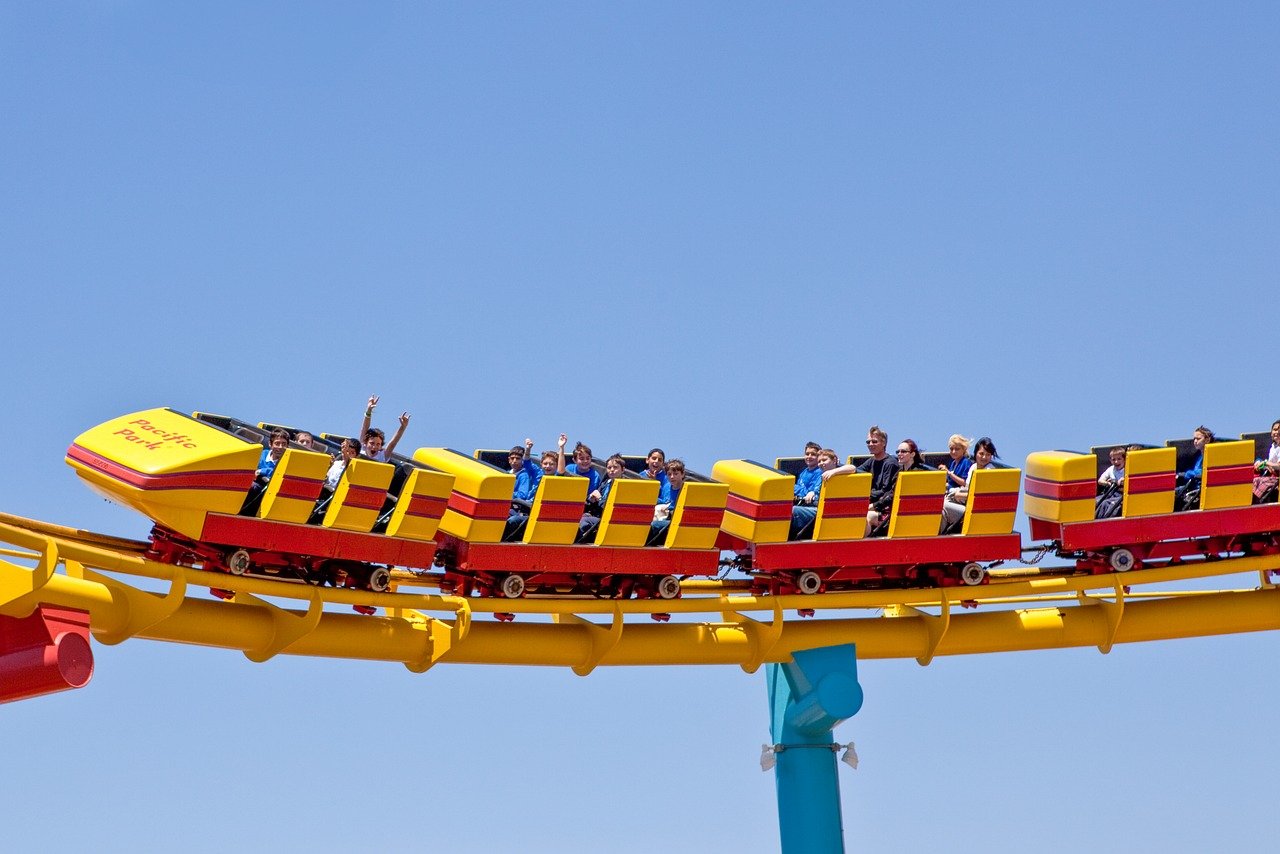
Daily Safety Checks
Before the gates of amusement parks swing open, and the laughter and screams of thrill-seekers fill the air, a crucial ritual takes place: the of roller coasters. These checks are not just routine; they are a vital part of ensuring that every ride is ready to deliver the excitement that riders crave, while also keeping them safe. Imagine the thrill of soaring through the air, but now imagine that thrill combined with the peace of mind that comes from knowing that everything has been thoroughly inspected.
Each morning, trained staff meticulously examine various components of the roller coaster. This includes checking the structural integrity of the tracks, ensuring that the trains are functioning smoothly, and verifying that all safety restraints are in excellent condition. The process is akin to a pilot conducting pre-flight checks before taking off; every bolt, every joint, and every safety feature must be scrutinized to ensure that the ride is not only thrilling but also safe.
Some of the key areas that undergo inspection during these daily checks include:
- Track Integrity: Inspectors look for any signs of wear, cracks, or misalignments in the tracks that could pose a risk during operation.
- Ride Vehicles: Each train is checked for proper functioning of wheels, brakes, and safety restraints to ensure they can handle the day’s rides.
- Safety Systems: Emergency stop systems and other safety mechanisms are tested to confirm they are in working order.
- Environmental Factors: Inspectors also consider weather conditions, looking for any issues such as debris on the tracks or potential hazards that could affect rider safety.
In addition to these checks, communication among the ride operators is crucial. If any issues are identified during the inspections, they must be reported immediately and addressed before the ride can open to the public. This teamwork is essential in creating a safe environment where fun can flourish without the shadow of danger hanging overhead.
Ultimately, the daily safety checks are a testament to the commitment of amusement parks to prioritize rider safety. They are the unsung heroes of the roller coaster experience, ensuring that every twist, turn, and drop is not only exhilarating but also secure. So, the next time you buckle in for a ride, remember that behind the scenes, a dedicated team has worked tirelessly to make your adventure possible.
Q: How often are roller coasters inspected?
A: Roller coasters undergo daily safety checks, as well as more comprehensive inspections annually to ensure ongoing safety and maintenance.
Q: What happens if a safety issue is found during a daily check?
A: If any safety issues are identified, the ride is immediately closed until the problem is addressed and resolved by maintenance staff.
Q: Are there specific safety regulations for roller coasters?
A: Yes, various organizations set safety regulations that amusement parks must follow to ensure the safety of all rides, including roller coasters.
Q: Can anyone ride roller coasters?
A: No, there are usually age and health restrictions in place to ensure that all riders are physically capable of safely enjoying the ride.
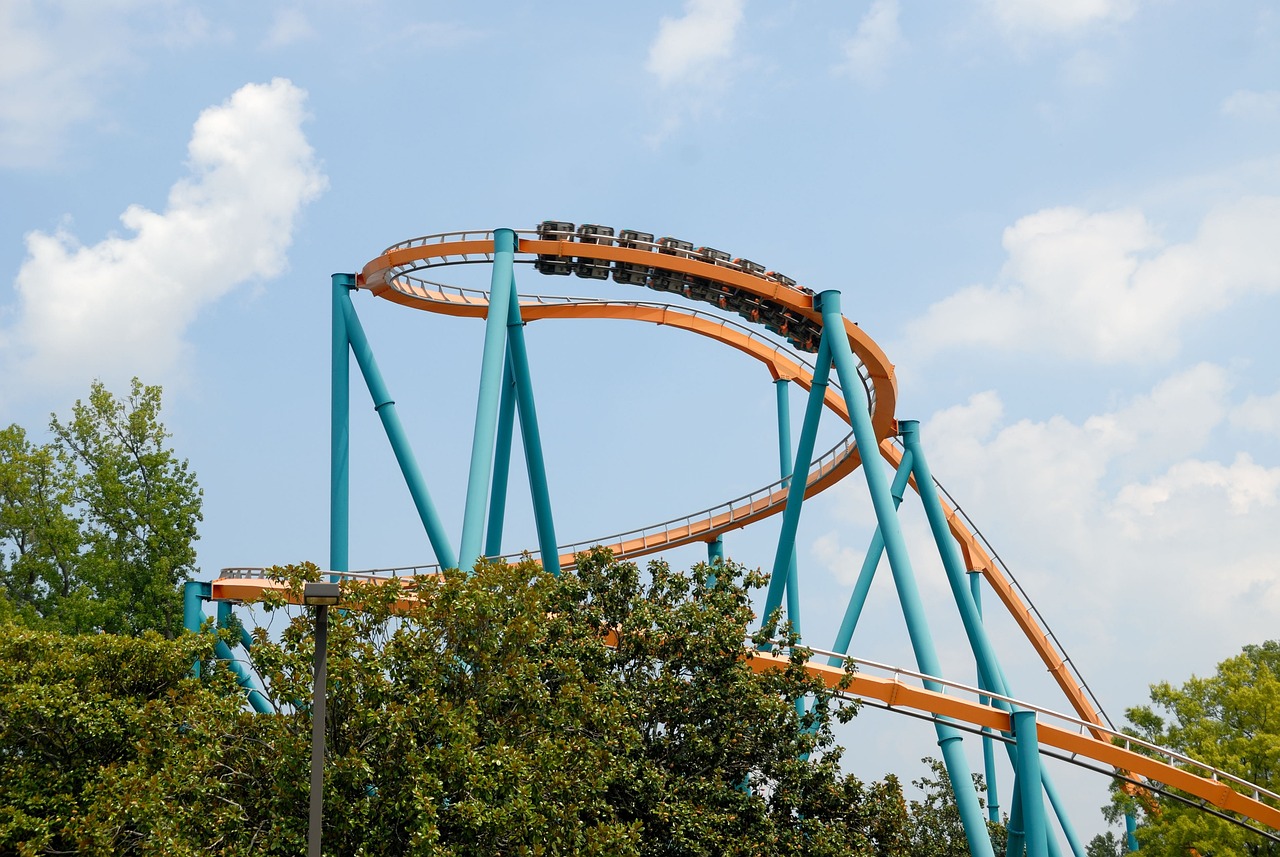
Annual Safety Evaluations
Annual safety evaluations are a critical component of maintaining the safety and reliability of roller coasters. These comprehensive reviews are not just a formality; they are designed to scrutinize every aspect of the ride, ensuring that it meets stringent safety standards. During these evaluations, engineers and safety inspectors conduct thorough assessments of the entire roller coaster system, from the tracks and supports to the mechanical components and safety restraints. Imagine this process as a meticulous health check-up for a high-performance athlete; every detail matters to ensure peak performance and safety.
Typically, an annual evaluation includes several key components:
- Structural Integrity Assessment: Inspectors check for any signs of wear and tear, corrosion, or stress fractures in the materials used for the coaster's construction.
- Mechanical Systems Review: This involves a detailed examination of the ride's mechanical components, including motors, brakes, and safety systems, to ensure they function correctly.
- Safety Restraint Functionality: Inspectors verify that all safety restraints are in excellent condition and operate smoothly, providing the necessary protection for riders.
- Emergency Procedures Testing: Evaluating the effectiveness of emergency protocols and ensuring that staff is adequately trained to handle any potential incidents is paramount.
These evaluations are conducted by certified professionals who have extensive knowledge of engineering principles and safety regulations. The results of the annual safety evaluations are documented in detailed reports that outline any necessary repairs or upgrades. If issues are identified, they must be addressed before the roller coaster can be reopened to the public. This process is vital not only for compliance with safety regulations but also for maintaining public trust in the amusement park's commitment to rider safety.
Moreover, the importance of annual safety evaluations extends beyond just compliance. They serve as an opportunity for amusement parks to innovate and improve their rides. For instance, if a new safety technology has been developed, it can be integrated into the coaster during its annual evaluation. This proactive approach not only enhances safety but also contributes to a more thrilling and enjoyable experience for riders. In essence, annual evaluations are not merely a requirement; they are a vital investment in the future of roller coaster safety.
Q: How often are roller coasters evaluated for safety?
A: Roller coasters undergo daily checks, but comprehensive annual safety evaluations are conducted once a year to ensure all systems are functioning properly.
Q: What happens if a roller coaster fails an annual safety evaluation?
A: If a roller coaster fails an evaluation, it cannot be reopened until all identified issues are resolved and the ride passes a subsequent inspection.
Q: Who conducts these safety evaluations?
A: Certified engineers and safety inspectors with expertise in amusement ride safety conduct the evaluations.
Q: Are riders informed about the safety evaluations?
A: While specific details of evaluations may not be publicly disclosed, amusement parks typically promote their commitment to safety through various channels.
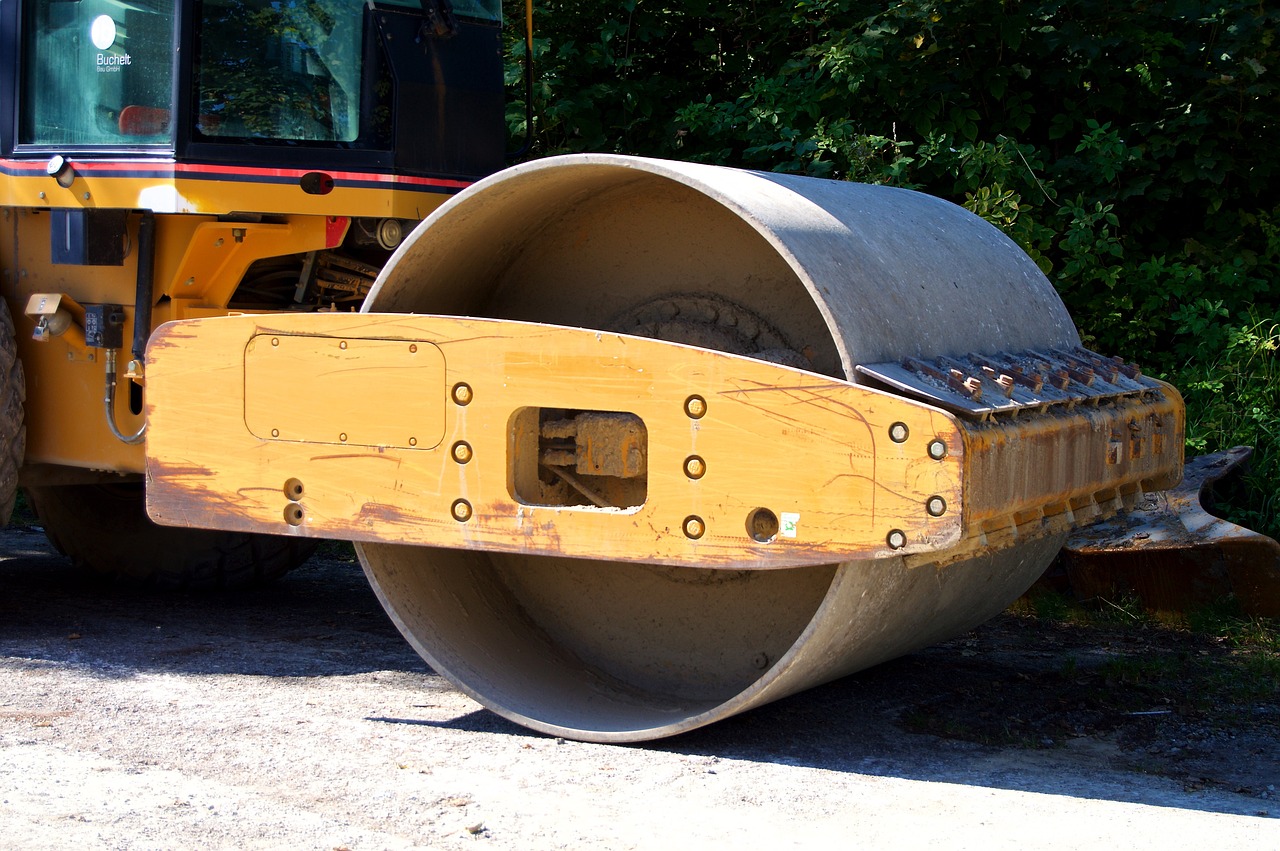
Common Risks and Incidents
When it comes to roller coasters, the thrill of the ride often overshadows the potential risks involved. However, understanding these risks is essential for both riders and operators to ensure a safe experience. One of the most common risks associated with roller coasters is mechanical failure. This can occur due to worn-out parts, lack of maintenance, or even design flaws. Just imagine the heart-stopping moment when a coaster suddenly comes to an unexpected halt or experiences a jolt; it’s enough to make anyone’s stomach drop. That’s why regular maintenance and inspections are crucial to identify and replace any faulty components before they lead to an accident.
Another significant risk involves rider behavior. While roller coasters are designed to be exhilarating, they also require riders to adhere to specific safety protocols. For instance, standing up or leaning out of the ride can lead to serious injuries. In fact, there are documented cases where riders have sustained injuries due to ignoring safety guidelines. It’s a stark reminder that while the rides are engineered for safety, personal responsibility plays a pivotal role in ensuring a safe experience.
Moreover, weather conditions can pose risks to roller coaster safety. High winds, rain, or lightning can lead to ride closures or malfunctions. For example, if a storm rolls in unexpectedly, the ride may need to stop suddenly, which can be disorienting for riders. Operators must monitor weather conditions closely and have protocols in place to address such situations. This is why you might see rides temporarily closed during inclement weather—better safe than sorry!
To give you a clearer picture of the types of incidents that can occur, here’s a brief overview:
| Type of Incident | Description | Prevention Measures |
|---|---|---|
| Mechanical Failures | Breakdowns due to worn-out components or design flaws. | Regular maintenance and inspections. |
| Rider Misconduct | Injuries caused by riders not following safety rules. | Clear signage and safety briefings. |
| Weather-Related Issues | Ride malfunctions due to adverse weather conditions. | Monitoring weather and having emergency protocols. |
In addition to these risks, it’s essential to acknowledge the psychological aspect of roller coasters. The thrill of the ride can sometimes lead to panic or anxiety, especially for first-time riders or those with a fear of heights. Operators often provide safety briefings to help alleviate these concerns, but it’s vital for riders to be mentally prepared as well. A little knowledge about what to expect can go a long way in enjoying the ride rather than succumbing to fear.
In conclusion, while roller coasters are designed with safety in mind, they are not without their risks. By understanding these common incidents and taking appropriate precautions—both as operators and riders—we can enjoy the exhilarating experience of roller coasters while minimizing the potential for accidents. So, the next time you buckle up for a ride, remember: safety is a shared responsibility!
- What should I do if I feel unwell while on a roller coaster? If you feel unwell, it's best to inform the ride operator immediately. They are trained to handle such situations.
- Are roller coasters safe for children? Most roller coasters have age and height restrictions to ensure safety for younger riders. Always check the park's guidelines.
- How often are roller coasters inspected? Roller coasters undergo daily checks before opening and comprehensive annual evaluations to ensure safety.

Rider Safety Tips
When it comes to roller coasters, the thrill of the ride is often accompanied by a few safety considerations that every rider should keep in mind. After all, what’s the point of enjoying that wild drop or loop if you’re not doing it safely? To enhance your experience and ensure you’re riding responsibly, here are some essential tips to consider before you buckle up for that adrenaline-pumping adventure.
First and foremost, age and health considerations play a crucial role in your safety on roller coasters. Most amusement parks have strict guidelines regarding who can ride, often based on height, age, and health conditions. For instance, if you have a heart condition, are pregnant, or suffer from severe anxiety, it’s wise to skip the ride. Always check the posted signs at the entrance of each ride, as they provide important information about restrictions. Ignoring these guidelines can lead to dangerous situations, not just for yourself but for others riding with you.
Next up, let’s talk about the importance of proper restraint use. Every roller coaster is equipped with safety restraints designed to keep you securely in your seat throughout the ride. But remember, these restraints are only effective if used correctly! Before the ride begins, make sure your harness or lap bar is snugly fastened. It’s also a good idea to double-check with the ride operator if you’re unsure about the safety mechanisms. A little precaution can go a long way in preventing accidents.
Additionally, it’s essential to stay alert and follow the ride’s instructions. Each roller coaster has its own set of rules, and these are often communicated by the ride operators. Listen carefully and follow their guidance. For example, you might be instructed to keep your hands and arms inside the ride at all times. This is not just for your safety, but also for the safety of those around you. Ignoring these instructions can lead to serious injuries, and nobody wants to be that person who disrupts the fun!
Moreover, consider your personal belongings. Before you hop on, ensure that all loose items are securely stored away. Sunglasses, hats, and even phones can become dangerous projectiles at high speeds. Most parks provide lockers or designated areas for storing personal items, so take advantage of these facilities. Not only does this keep your belongings safe, but it also prevents distractions during the ride.
Finally, if you’re riding with friends or family, communicate openly about your comfort levels. If someone feels uneasy about the ride, it’s perfectly okay to sit it out. The thrill of roller coasters is best enjoyed when everyone is on board and excited. Plus, there’s always the option to take a break and enjoy the park’s other attractions while waiting for your group to finish their ride.
In summary, keeping safety in mind while enjoying roller coasters is vital for a fun experience. By adhering to age and health guidelines, ensuring proper restraint use, following ride instructions, securing personal belongings, and communicating with your group, you can maximize your enjoyment while minimizing risks. Remember, the goal is to create memories filled with laughter and excitement, not fear or injury!
Q: Are there any height restrictions for roller coasters?
A: Yes, most amusement parks have height restrictions for safety reasons. These are typically posted at the entrance of each ride.
Q: What should I do if I feel sick while on a roller coaster?
A: If you feel unwell, try to keep your eyes closed and breathe deeply. If the nausea persists, inform the ride operators as soon as the ride ends.
Q: Can I ride if I’m pregnant?
A: It’s generally advised that pregnant women avoid roller coasters due to the high speeds and sudden movements involved.
Q: What happens if I lose an item on the ride?
A: Most parks have procedures for retrieving lost items, but it’s best to secure your belongings before riding to prevent loss.
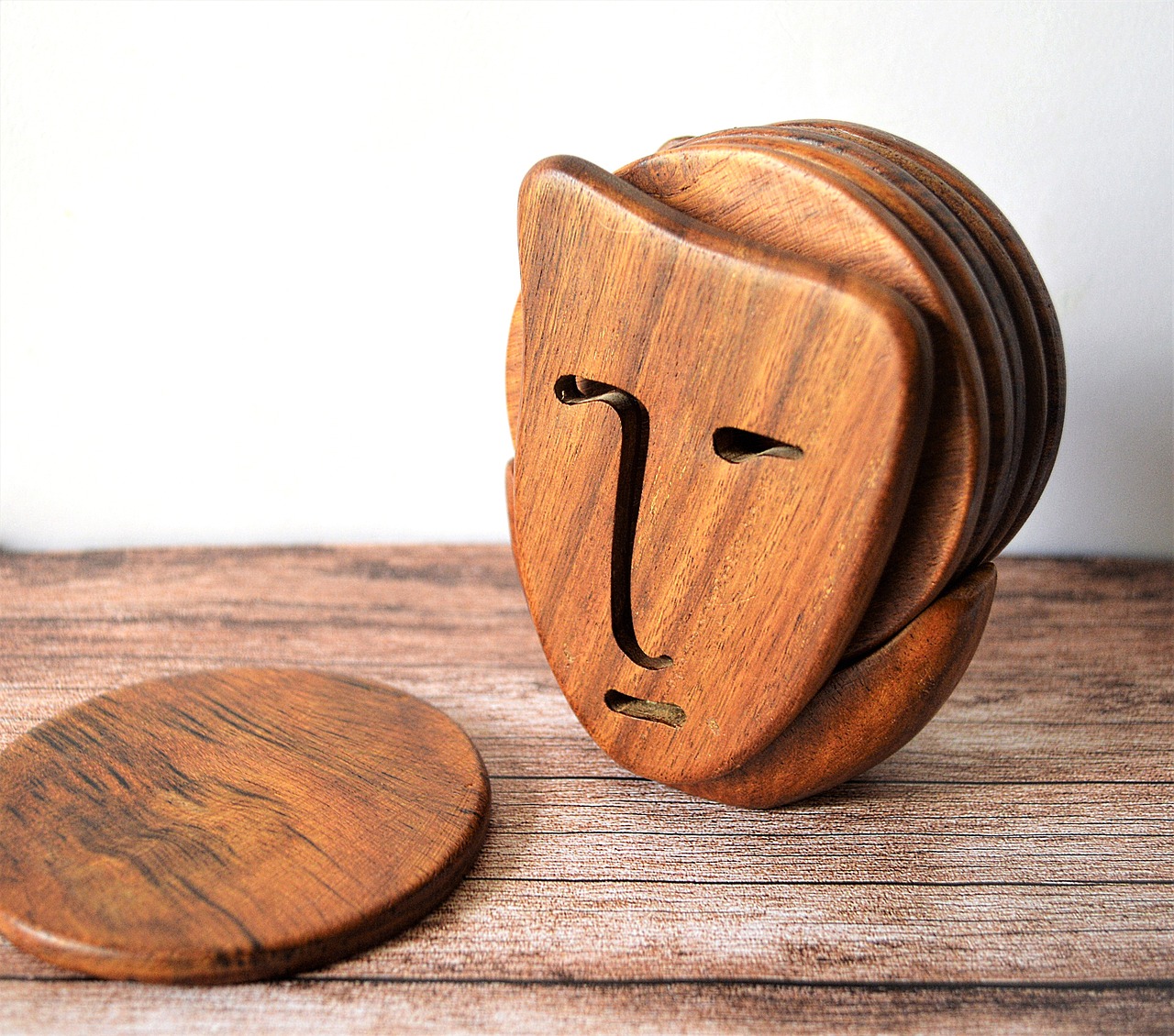
Age and Health Considerations
When it comes to roller coasters, understanding is paramount for ensuring a safe and thrilling experience. Amusement parks often implement specific guidelines regarding who can ride, and these rules are not arbitrary; they are based on extensive research and safety protocols. For instance, many parks have minimum height requirements to ensure that riders can properly fit in safety restraints. It’s not just about height, though; weight can also play a role. Heavier individuals may experience different forces during the ride, which could affect their safety and comfort. So, if you’re planning a day at the amusement park, be sure to check these requirements before you buckle up!
Moreover, certain health conditions can significantly impact a rider's ability to safely enjoy a roller coaster. Conditions such as heart problems, epilepsy, or severe anxiety can make the experience potentially hazardous. For instance, the sudden drops and sharp turns can trigger anxiety attacks in some individuals, while others might face serious health risks if they have pre-existing conditions. Therefore, it’s essential to assess your health and consult with a medical professional if you have any doubts. Remember, the goal is to have fun, not to put yourself at risk!
Many parks provide detailed information about health restrictions, often displayed prominently at ride entrances. Here’s a quick look at some common health considerations that can affect your ability to ride:
- Heart Conditions: Individuals with heart issues should consult a doctor before riding.
- Pregnancy: Pregnant individuals are usually advised to avoid roller coasters altogether.
- Back and Neck Issues: Those with chronic back or neck problems should think twice before taking on the twists and turns.
- Recent Surgeries: If you’ve had surgery recently, it’s wise to check with your healthcare provider.
Ultimately, while the thrill of roller coasters is undeniable, prioritizing safety is crucial. Always adhere to the posted guidelines and listen to your body. If you feel unsure or unwell, it’s perfectly okay to sit a ride out. After all, there are plenty of other attractions to enjoy that don’t involve heart-stopping drops!
Here are some common questions regarding age and health considerations for roller coaster riders:
| Question | Answer |
|---|---|
| What is the minimum height requirement for roller coasters? | Most parks require a minimum height of 42-54 inches, depending on the ride. |
| Can pregnant women ride roller coasters? | It is generally advised that pregnant women avoid roller coasters due to potential risks. |
| Are there any age restrictions for riding? | Some rides may have age restrictions, but it varies by park and ride. |
| What should I do if I have a medical condition? | Always consult your doctor before riding if you have any medical concerns. |

Proper Restraint Use
When it comes to roller coasters, one of the most critical aspects of safety is the proper use of restraints. These safety devices are designed to keep riders securely in their seats, preventing any unexpected movements that could lead to injury. However, it's not just about having a restraint in place; it's about ensuring that it is used correctly. Imagine being on a thrilling ride, your heart racing, and the adrenaline pumping through your veins. The last thing you want is to feel insecure because your restraint isn't fastened properly. So, what can you do to ensure that your safety is prioritized? Let's dive into some essential tips!
First and foremost, always listen to the ride operators. They are trained professionals who understand the importance of safety and will guide you through the process of securing your restraint. When you sit down, make sure to pull down the lap bar or secure the harness as instructed. If you have any doubts about whether it’s tight enough, don’t hesitate to ask the operator for assistance. It's better to be safe than sorry!
Next, check your restraint before the ride begins. Give it a gentle tug to ensure it’s locked in place. Many modern roller coasters are equipped with sensors that alert the operators if a restraint isn’t secure, but it’s always wise to do your own checks. Think of it like double-checking your seatbelt before a road trip; it’s a simple step that can make a world of difference.
It’s also important to be aware of your body size and shape when using restraints. Some rides have specific guidelines regarding height and weight limits, and exceeding these limits can lead to a less secure fit. If you're unsure whether you meet the requirements, check with the park staff before getting in line. They can provide guidance and ensure that you choose a ride that is safe for you.
Additionally, be mindful of loose items like hats, glasses, or bags. These can not only distract you during the ride but can also become projectiles if not secured properly. Many parks provide storage options for personal belongings, so take advantage of those to keep your items safe and your mind at ease.
Lastly, remember that proper restraint use isn't just about the physical aspect; it's also about mental readiness. Before the ride starts, take a moment to breathe and relax. A calm mind can help you focus on the thrill of the ride rather than worrying about your safety. After all, roller coasters are designed to be exhilarating experiences, and feeling secure in your restraint is key to enjoying every twist and turn!
In summary, proper restraint use is paramount for a safe roller coaster experience. By following the ride operators' instructions, checking your restraints, being aware of body size limits, securing loose items, and maintaining a calm mindset, you can ensure that your ride is both thrilling and safe. So next time you’re at the amusement park, remember these tips and enjoy the ride!
- What should I do if I feel my restraint is not secure?
If you feel your restraint is loose or not secure, immediately alert the ride operator for assistance. - Are there height and weight restrictions for roller coasters?
Yes, most roller coasters have specific height and weight restrictions to ensure rider safety. Always check the guidelines before riding. - Can I ride with loose items like hats or bags?
No, it’s best to secure all loose items in designated storage areas to prevent them from becoming hazards during the ride. - How can I ensure my child is safe on a roller coaster?
Make sure your child meets the height and weight requirements and instruct them to follow all safety guidelines provided by the ride operators.
Frequently Asked Questions
- What safety measures are in place for roller coasters?
Roller coasters are designed with multiple safety measures, including robust engineering standards, safety restraints, and regular inspections. Each ride undergoes daily checks to ensure all components are functioning correctly, and annual evaluations provide a thorough review of the coaster's overall safety.
- How often are roller coasters inspected?
Roller coasters are subjected to various inspection protocols. Daily safety checks are performed before the park opens, while more comprehensive annual evaluations are conducted to assess the ride's structural integrity and safety features. These inspections help identify any potential issues before they become serious problems.
- Are there age or health restrictions for riding roller coasters?
Yes, amusement parks often have specific age and health guidelines to ensure rider safety. These restrictions are in place to protect individuals who may have certain health conditions or who may not meet the minimum height requirements, ensuring that everyone enjoys a safe ride experience.
- What should I do if I feel unsafe on a roller coaster?
If you ever feel unsafe while on a roller coaster, it's important to communicate with the ride operators immediately. They are trained to handle such situations and can provide assistance. Always remember to follow safety instructions and use the restraints properly to minimize risks.
- How can I ensure my safety while riding?
To enhance your safety while riding roller coasters, always follow the park's guidelines, use safety restraints correctly, and pay attention to any safety briefings. If you have health concerns or are unsure about riding, consult with the ride operators before getting on.
- What are the common risks associated with roller coasters?
Common risks include sudden stops, unexpected movements, or mechanical failures. However, these incidents are rare due to strict safety regulations and protocols in place. Understanding the ride's safety features and adhering to guidelines can help mitigate these risks.



















